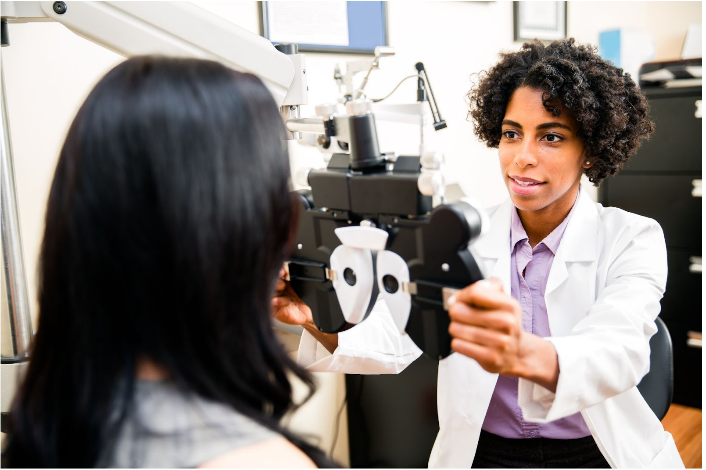
Patient education is a critical component of operating a successful eye care practice. Especially today, when many individuals look first to the internet for health and wellness advice, you have an obligation to provide your patients with accurate and beneficial information that will help them protect and preserve their healthy vision.
On a positive note, a recent study found that the majority of ophthalmic patients at least preferred to learn about eye health directly from one-on-one sessions with their practitioner. Many also appreciated receiving printed material about specific conditions or being directed to specific websites to learn more. Topics such as cataracts, glaucoma, macular degeneration, and dry eye disease were of particular interest among older patients (59+), while younger patients tended to be more focused on glasses, contact lenses, and double vision.
The following 5 tips will help you develop your patient education strategy, which in turn will go a long way toward improving patient satisfaction and health outcomes in your practice.
1. Educate patients before, during, and after exams. Patient education begins even before they show up at your office for an appointment. In addition to emailing important forms for patients to fill out beforehand, consider sending along information about what they can expect during their visit (e.g., who will greet them when they arrive, what to expect during the exam process, and the type of equipment that may be used and why). Continue the education journey during the exam by answering questions and discussing key findings, as well as after they leave by providing take-home information about everyday vision care or condition management.
2. Set aside time to listen and answer questions. While the goal of any ophthalmic office is to streamline patient flow, it is still important to allocate a set amount of time during exams to listen to your patients and answer any questions they may have. This essential part of the learning process not only serves to expand your patients' knowledge but may also help to identify gaps in your education protocol where there is room for improvement. A patient with dry eye disease, for example, may ask a question you hadn't considered before but that is relevant to helping them manage their condition. You can then revise your dry eye materials to include the answer.
3. Understand that different patients will have different needs. You likely see a broad range of patients in your practice, and what works for one may not work for all. While older patients may prefer to spend time during their exam asking questions and discussing their condition, a parent of a pediatric patient may prefer a simple handout that they can review at home when they have more time. Keeping these different learning styles in mind will help you develop a more balanced, comprehensive education strategy that is inclusive to your entire patient population.
4. Use tools and resources to ensure patients understand key concepts. From pamphlets and brochures to instructional videos and downloadable handouts, there is no shortage of materials available to help teach your patients about the importance of healthy vision and how to care for their eye health at every age. As part of your ongoing patient education plan, research, and select what you think will be the best tools and resources for your patients, and reevaluate those materials regularly to see if they need to be revised or updated.
5. Ask for feedback (and use it to improve). Finally, understand that patient education is an ongoing journey, and your strategies and protocols will continue to evolve to meet the needs of your patients now and in the future. Give your patients an opportunity to provide feedback on what's helpful and what's not, and use their comments and observations to improve your education blueprint when applicable.
What are some of the ways in which you address patient education in your practice? What approaches or materials have you found helpful in teaching patients about everyday eye health as well as post-surgical care and management? We'd love to hear your answers in the comments below.
For additional tips on managing a successful ophthalmic practice and improving patient outcomes, visit the Veatch Ophthalmic Instruments blog. In business for over 30 years, Veatch has earned a reputation for outstanding service and commitment to customer satisfaction among ophthalmic professionals nationwide. Contact us at (800) 447-7511 to learn more.